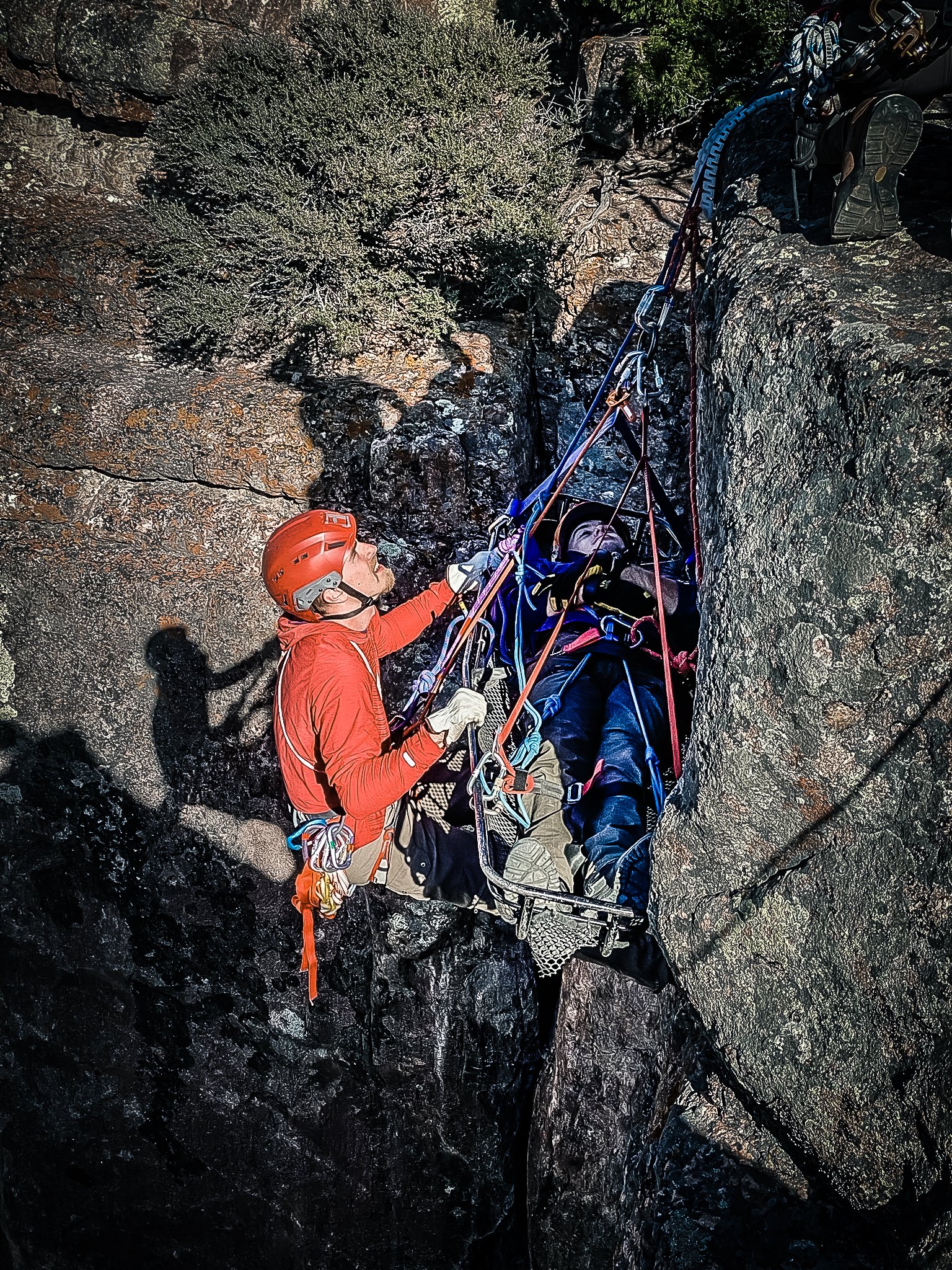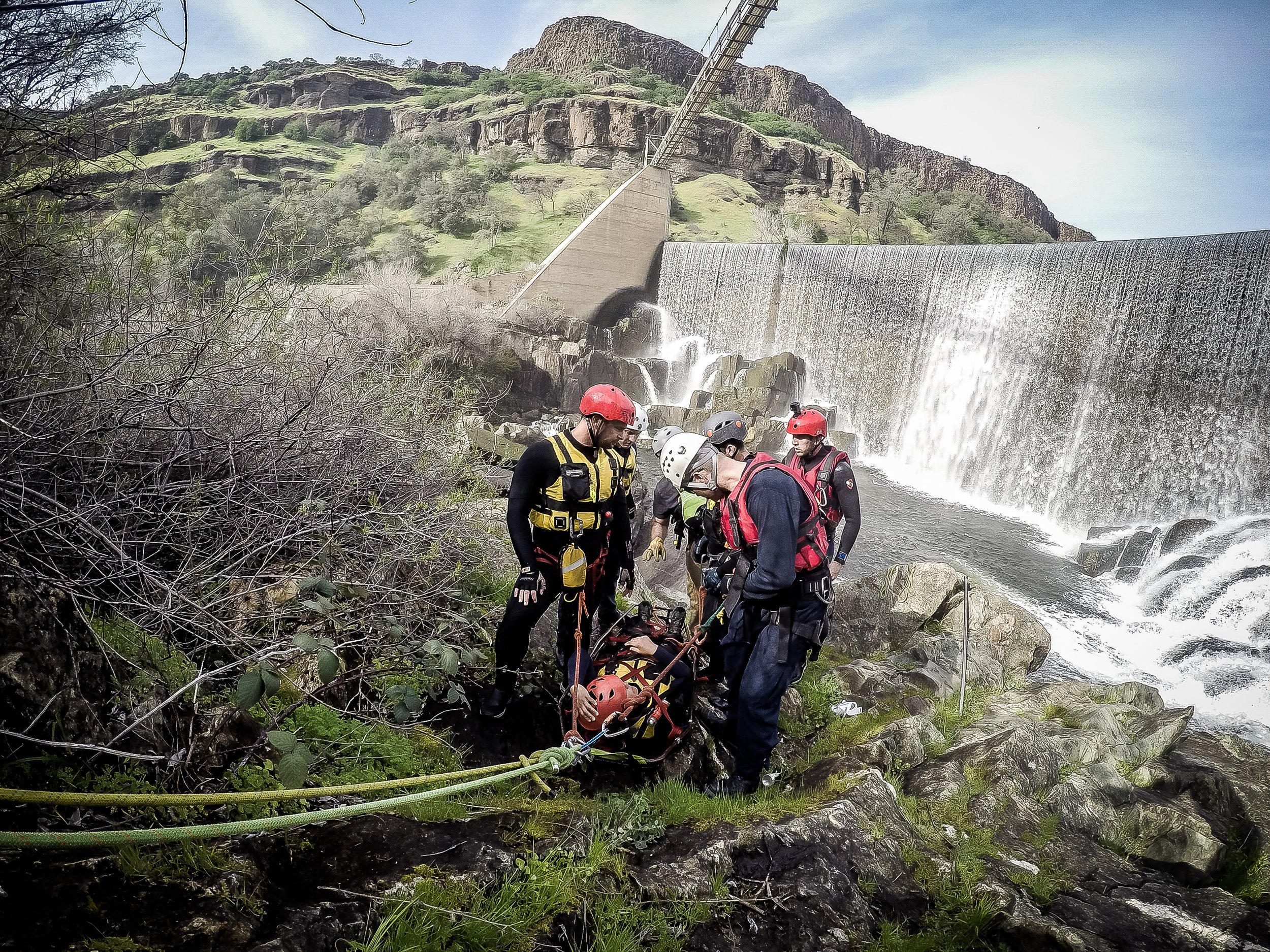
Rope Rescue Operations
Valid for 3 Years | Rescue 3 International | $875.00
This course provides students with the fundamentals of rope rescue in the steep-angle and high-angle environments. Students learn and practice pre-planning and size-up of rope rescue operations, knots, anchor systems, lowering systems, ascending and descending lines, mechanical advantage systems, patient packaging and litter attending. Students will also learn how to safely navigate steep-angle or over-the-bank rescue situations and assist rescuers in high-angle environments. This course meets the requirements for the NFPA standard at the Operations level for technical rope incidents. This three or four day course has 1/2 day of classroom instruction with the remainder of the days as practical field exercise. There is no rope training prerequisite for this course. This course is a prerequisite to the Technician Level course.
Course Details
-
The Rope Rescue Operator course is a great way to bring rescuers into technical rescue. This course starts with the basics and builds on each new skill allowing students to reinforce previous skills.
As skills are developed, scenarios are introduced giving hands on training in realistic settings.
Getting a solid foundation of rigging for high angle rescue is the goal for each student who takes this course.
-
As the introduction to rope rescue there are no course or training requirements to meet before taking this course.
Students must be 18+ years old
-
This course is certified by Rescue 3 International.
It lasts for 3 years and is renewed by RRO or RRT courses.
-
Cost of the course is 875.00
This includes 30 hours of instruction, technical rescue field guide, skills sheet, certificate of completion and wallet card.
-
Each student will need:
Helmet
Harness (type 2 or 3 is fine)
Gloves
Sturdy footwear
Outerwear appropriate for the conditions.
“Outstanding! Excellent experience overall with solid, great teaching. I learned a ton and feel well prepared to work with my rescue team. Looking forward to future training with Black Fox.”
-Tim Brown, Rope Ops and Tech Student, 2024
Schedule a Custom Course
Need a custom course for your team? Black Fox Rescue Institute offers the option to schedule custom course dates at your location. Let us know what you need and we’ll work with you to set up a custom course that works for your team.
FAQs
-
You will want to have your personal equipment with you on day one of your rigging course. The basics of your personal rope rescue kit should include the following.
Helment
Technical rescue helmet that can protect you from falling rocks or equipment as well as impact from a fall. You may consider other items like the ability to attach a headlamp, visor, or sun shade as well.
Harness
The type of harness you may be wearing will depend on your response area and mission profile. Traveling into the backcountry, weight is a big concern. Having a sit harness (Type II) with the ability to add a chest harness when needed is an acceptable system. If you are part of an urban rescue team you will most likely have a full body harness (Type III) which are heavier but are more comfortable to wear or sit in for long periods of time.
Gloves
Gloves for technical rope work need to provide you with protection from running rope through your hands while at the same time allow enough dexterity to grasp the rope and operate devices. Depending on the weather you may choose fingerless gloves, or choose to have a warm outer glove over the rigging glove.
Boots
Footwear for rope rescue and high angle work need to provide a fairly stiff sole to avoid your foot loop from pressing into your feet. Good soles are important to helping you avoid slips and falls.
Some additional items that may be nice to have include: Personal (marked) carabiners and preferred Decent Control Device, Prussic/Purcells, Ascending equipment, Sunglasses, Buff, Rain Jacket and Pants, Warm Layers, Head Lamp, Water and Food and Snacks.
-
Joining a technical rescue team can be the start of a very rewarding career or volunteer pursuit. Taking a Rope Rescue Operations course can help to open doors when you are looking to be accepted by a team.
Hard technical rope rescue skills are of course not the only thing that a team is going to want to see in on your application. Having additional medical certifications like a Wilderness First Responder, EMT, Paramedic, Nurse, or Doctor will show you are able to provide additional value.
Other interests and skills also help with demonstrating competence in the outdoor and in uncomfortable situations. Climbing, Skiing mountaineering, Caving, Arborist work, Tower work, Swiftwater Rescue, and Rope Access work will all give you relevant experience.
As you look at teams be sure they are a good fit for what you want to be doing. Their mission profile, response area and number of calls per year are good places to start when looking at a good fit for you.
-
Rope Rescue Operations is the best option for someone who is wanting to learn the basics of rigging for high angle rescue. This rigging class teaches you how to approach a rescue, set up high angle rescue systems and how to manage a patient in a litter. Additionally you learn how to climb ropes and rappel back down. These ascend and decent skills are key to having rope mobility.
Overall Rope Rescue Operations is the best rigging course for new rescuers and teams.
-
Rope Rescue Operator and Rope Rescue Technician are courses 1 & 2 out of 3 courses in the Technical Rope Rescue certification progression Rescue 3 International offers.
Rope Rescue Operations provides the fundamental building blocks rescuers need to be able to do technical rigging for high angle rescues. These include knots, anchors, mechanical advantage, lowering systems. Ascending and decending on ropes, litter handling and basic edge transitions.
Rope Rescue Operations is a prerequisite for Rope Rescue Technician.
Technician builds on the the skills learned in the Operations course. Additional skills for moving patients vertically and laterally are introduced. These include changing litter orientation, having the rescuer on separate ropes from the litter. Highlands, Skateblocks and Cross Hauls.
For a rescue team to be competent at rope rescue we recommend at least the Rigging leaders progressing through both levels and ideally the entire team.






“We don't rise to the level of our expectations, we fall to the level of our training.”
—Archilochus
From the Field…
One of the best pieces of advice I’ve gotten in this sport was to “be a proud, humble badass.” The example I thought of was Bruce Lee who once said said, “Knowledge gives you power, but character, respect.” What we do is dangerous and difficult and requires a tremendous amount of respect…
Read more >>>
More courses…
Technical Rope Rescue: Technician Level
This course is designed to take students from basic rope rescue skills to progressively more vertical systems and scenarios.



